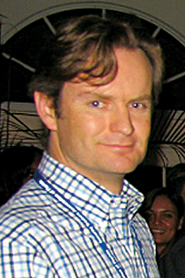Morgan Stanley has begun offering its customers the ability to access both its electronic and high touch voice trading services simultaneously with a single order.
The initiative comes as many among the bulge bracket are rolling out so-called ‘one-touch’ services, whereby fewer individuals oversee customer orders. The services bridge those of the ‘high touch’ cash desk and the ‘low touch’ electronic desk, which have traditionally been kept separate.
Under the plan, as described to Traders Magazine by Morgan Stanley executives, buyside traders submitting low touch algorithmic orders to the firm will now also be able to direct those orders to their high touch sales trader if they choose, who can work the buy or sell manually.

Often, a trader will need to contact both desks to get a trade done. The new service is intended to streamline that process.
The new service is strictly optional and available on an order-by-order basis only, according to Rupert Fennelly, head of sales for the Americas in Morgan Stanley’s electronic trading group. Called ‘Opt In,’ the approach contrasts with traditional order handling whereby buyside traders send their algo orders to the low-touch electronic desk and block trades to the more expensive, human-driven high-touch cash desk.
Morgan Stanley’s program is being imitated by most bulge shops in some form as they seek to spread their incoming orders over fewer handlers. Merging high touch with low touch is expected to cut costs as well as appeal to those buyside traders who prefer a single point of contact.
Many on the buyside do not like the concept of a single point of contact. First, they don’t want to lose the anonymity they get when trading with a broker’s electronic desk. Second, they fear a single individual will not possess the expertise of both a sales trader and an electronic trading executive.
That’s why Morgan Stanley decided to adopt the order-by-order approach. It found its clients—especially the larger ones—were not overly enamored of the one-touch model, according to Fennelly. “They value each channel separately,” he said. “They value the cash desk for color, for flow information, for the ability to find a natural and for the ability to put up a block. They value the electronic desk for their consultations on algorithms, views on market structure, or for anonymity. So in many cases they want that separation.”
The broker has no plans at this stage to designate a single individual to provide blanket combined high- and low-touch trading services to any particular buyside trader or money management firm, Fennelly said.
The purpose here is to make it easier for the buyside trader to tap into the voluminous flow crossing Morgan Stanley’s trading desks during the day, Fennelly noted. “We are executing well in excess of 10 percent of the consolidated tape,” he said. “That’s significant liquidity. So there are opportunities where we want to collectively bring that liquidity to our customers.”
To activate the service, a buyside trader must check a new ‘Opt In’ box on his order ticket. If he does, then his coverage on both the electronic and cash desks will receive the order. On the cash desk, one or more sales traders will review the order. They may decide to do nothing and simply let the algorithm work the order. Or they may call the customer and advise him to let them work it manually.
Still, “The intent is not for the order to be shopped,” explained Fennelly. “But if there is a liquidity situation on the desk and the client has opted in, then the sales trader will make the client aware of it and offer them the opportunity to participate in the trade.”
Buyside traders with whom Traders Magazine spoke agreed that moves by the bulge bracket to a one-touch model was understandable given the volume drought. For many, it represented the future of the business.
“Consolidation is here,” said Craig Jensen, a principal and head trader at Armstrong Shaw Associates, a New Canaan, Conn.-based asset manager with $2.5 billion in equities. “It’s been here, and it’s ongoing. From when electronic trading first took off, it’s been a natural progression to where, in the end, there’s going to be overlap with cash trading.”



